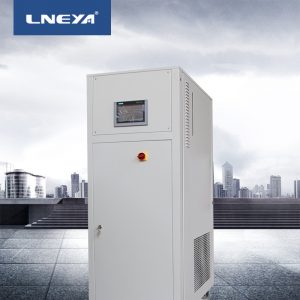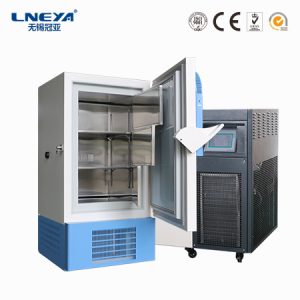원자로의 냉각 및 가열 및 사용 원리
Cooling and heating circulator thermostats are commonly used with glass reactors for biochemical instruments. They are widely used in modern fine chemicals, biopharmaceuticals, scientific research and experiment industries. They can be concentrated, distilled, Will stay, separate and purify the reaction. In the production process, whether it is a double-layer glass reactor or a single-layer glass reactor, the refrigeration heating temperature control system can generally complete high temperature, low temperature, and vacuum reaction experiments at the same time. Under constant temperature conditions, in a closed container, the refrigerating and heating circulator can be combined with a glass reactor to carry out stirring and reaction under normal or negative pressure, and can control the evaporation and reflux of the reaction solution.
One of the methods of obtaining high temperature is steam heating. When the cooling and heating temperature control system is matched with the glass reactor, the heating temperature is required to be below 100°C, and the glass reactor can be heated by steam. In this method, the equipment is heated with subatmospheric steam. When the temperature is required to be in the range of 100°C to 180°C, saturated steam can be used; when the temperature is required to be higher, high-pressure superheated steam can be used for heating.
Different manufacturers’ isolation reactor heating circulators are designed with different temperature ranges and media. It is necessary to select the appropriate media according to the available media of the equipment. Common media include water, oil, refrigerant, etc. The cooling process of the equipment is to use the refrigerant to absorb the excessive heat of the equipment and evaporate it to achieve the purpose of temperature difference.
The principle of temperature control of the matching reactor is indirect temperature control. The temperature is controlled by the heat transfer oil or other medium in the jacket of the reactor and the coil, and the temperature of the reactor wall is raised and lowered through the medium.
Our LNEYA heating circulator can set the working temperature and alarm temperature on the equipment digital display, press the heating option, after the indicator light is on, you can adjust its heating power through power selection; when using heat transfer oil, it is recommended to directly contact the equipment The manufacturer purchases the corresponding heat transfer oil. When using it, the heat transfer medium cannot contain water, otherwise it will cause equipment failure.
관련 권장 사항
-
Precautions for the use of cooling and heating circulation device for lithium battery testing
1038As a professional experimental test auxiliary instrument, the cooling and heating circulation device for lithium battery testing is the circulating supply end of the cold source and the heat source, with a wide operating range. It is used in pharm...
세부 정보 보기 -
What should be paid attention to in the reaction kettle nitric acid cooling system?
999After purchasing the nitric acid cooling system of the reactor, many users often do not notice the details that need to be paid attention to when the equipment is turned on. It is necessary to check whether there are few pieces of the product, wh...
세부 정보 보기 -
Effect Of Humidity On Laboratory Chillers
1067The high humidity reduces the insulation strength of the electrical equipment of the chiller in the laboratory. The moisture in the air adheres to the surface of the insulating material to form condensation, which reduces the insulation resistance...
세부 정보 보기 -
최소 40도 냉장고 사용 시 주의사항
117940도 이하 냉장고의 온도는 실내 온도입니다: 5-32 °C, 상대 습도 80%/22 °C, 지상과의 거리> 10cm, 고도 2000m 이하, 안전한 환경은 낮은 40 도의 원활한 작동을 보장합니다 ...
세부 정보 보기
 LNEYA 산업용 냉각기 제조업체 공급 업체
LNEYA 산업용 냉각기 제조업체 공급 업체














